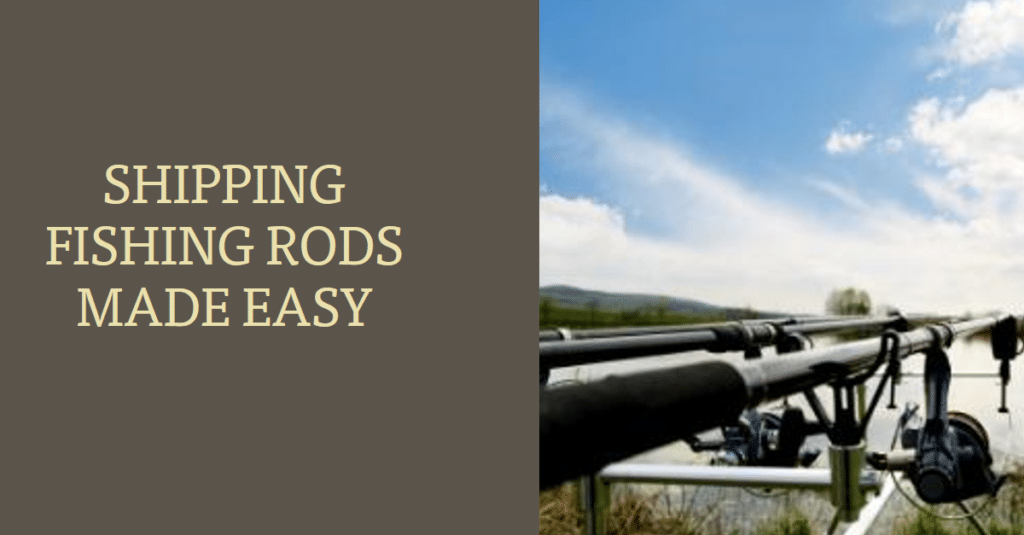
Whether you’re moving to a new location or selling your fishing rods online, it’s essential to ship them safely to avoid any damage. Properly packing and choosing the appropriate shipping methods are the keys to ensure the safety of your prized possession.
In this guide, we will provide you with a quick guide on how to ship fishing rods successfully. We’ll cover everything from packaging to shipping options so that you can rest assured that your fishing rods will arrive undamaged.
Key Takeaways
- Proper packaging is crucial to ensure the safety of your fishing rods during shipping.
- When shipping fishing rods, choose a trusted carrier that offers insurance and tracking options.
- Label your package clearly and include all necessary information to avoid any shipping delays.
- It’s always a good idea to take pictures of your packaged fishing rods before shipping them.
- Don’t forget to check for any shipping restrictions or requirements before sending your fishing rods.
Table of Contents
Packaging Fishing Rods Securely
When packing fishing rods for shipping, it’s important to take extra care to prevent any damage during transit. Follow these steps to ensure your fishing rods arrive safely:
- Disassemble your fishing rods: Remove the reel, line, and any accessories from the rod. Take the time to wrap each section individually with bubble wrap, using a sufficient amount to cushion and protect them from impact.
- Secure the guiding rings: Use masking tape to secure the guiding rings on your fishing rod. This will prevent them from getting damaged and moving around during transit.
- Use a sturdy shipping tube: Choose a sturdy shipping tube that is at least 8 inches in diameter and sufficiently long enough to house your disassembled rod sections. A PVC or cardboard shipping tube should suffice.
- Add extra cushioning: To provide additional cushioning, stuff the gaps in the tube with packing paper or bubble wrap.
- Seal the tube: Seal both ends of the shipping tube with strong packing tape. Use clear tape to ensure any shipping labels are visible.
- Label the tube: Clearly label the shipping tube with your name, address, phone number, and the recipient’s information.
- Choose the right shipping option: Select a trusted shipping carrier that offers tracking and insurance for your shipment.
How should I package my fishing rods for shipping?
To package your fishing rods for shipping, follow these steps:
1. Remove the reel if possible and dismantle any detachable parts.
2. Wrap each rod individually with bubble wrap or foam padding.
3. Place the wrapped rods inside a sturdy cylindrical tube, such as a PVC pipe or a heavy-duty cardboard tube.
4. Secure the ends of the tube with strong tape or caps to prevent the rods from slipping out.
5. Fill any remaining space inside the tube with additional padding, such as crumpled newspaper or foam peanuts.
6. Seal the tube with tape and label it clearly with the sender’s and recipient’s address.
What are the best shipping options for fishing rods?
The best shipping options for fishing rods depend on factors such as distance, timeframe, and budget. Here are some popular options:
1. Postal services: Most postal services offer affordable shipping options for fishing rods, including parcel post or priority mail.
2. Courier services: Private courier companies like UPS, FedEx, or DHL can provide expedited shipping with tracking services for an extra fee.
3. Freight services: For longer distances or bulk shipping, freight services offer cost-effective solutions.
4. Retailer services: Some fishing tackle retailers provide specialized shipping services for fishing rods, ensuring proper handling and insurance coverage.
How should I protect my fishing rods during shipping?
To protect your fishing rods during shipping, consider these tips:
1. Use sturdy packaging materials such as a cylindrical tube or a hard-shell rod case.
2. Wrap each rod individually with bubble wrap or foam padding to prevent them from colliding.
3. Ensure the rods are securely fastened inside the packaging to prevent movement during transit.
4. Add extra padding, such as crumpled newspaper or foam peanuts, to fill any empty spaces inside the packaging.
5. Label the packaging as fragile and include contact information in case of any mishaps during transit.
